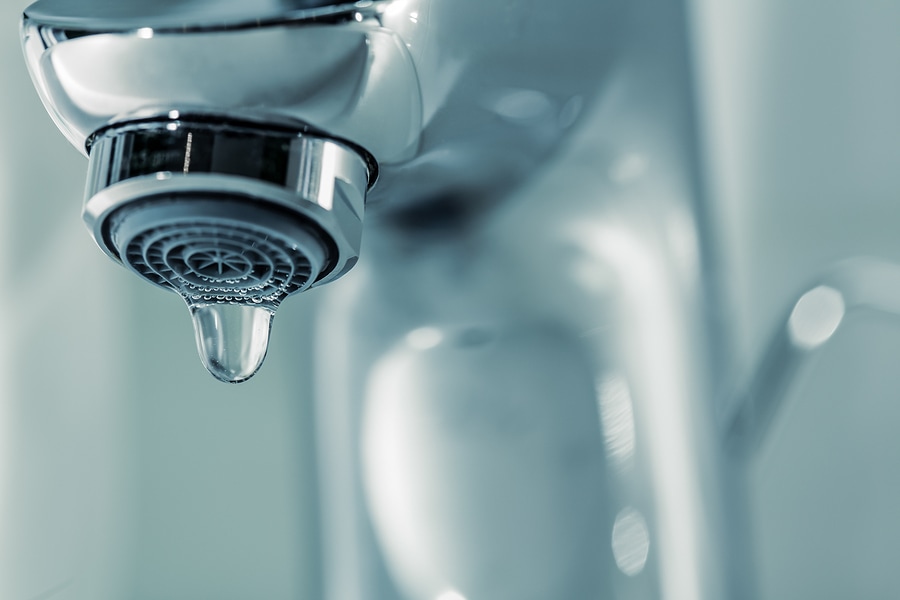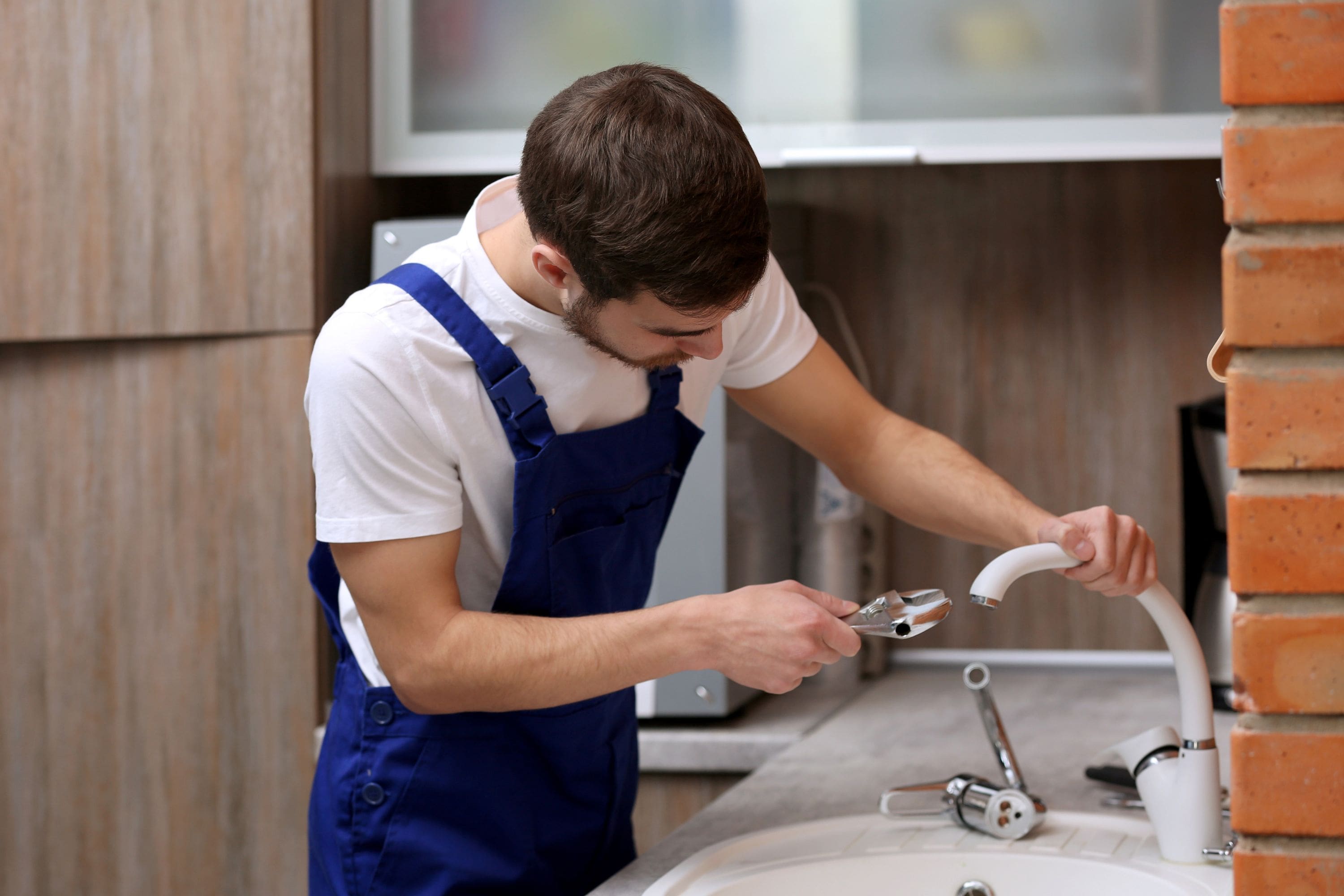We've discovered this great article about Should I Repair or Replace a Leaky Faucet? directly below on the net and figured it made good sense to write about it with you over here.

Trickling faucets may appear like a small trouble, yet their influence exceeds just the inconvenience of the audio. From drainage to incurring unnecessary monetary prices and health risks, disregarding a leaking tap can bring about numerous consequences. In this article, we'll delve into why it's important to address this typical family problem immediately and successfully.
Waste of Water
Ecological Influence
Trickling faucets add considerably to water waste. According to the Epa (EPA), a solitary tap leaking at one drip per secondly can waste more than 3,000 gallons of water per year. This not only pressures water resources however additionally impacts ecological communities and wildlife based on them.
Financial Expenses
Boosted Water Bills
Past the environmental impact, trickling faucets can blow up water expenses considerably. The collected wastage gradually translates into greater utility costs, which could have been prevented with prompt repair work.
Prospective Home Damages
Moreover, extended trickling can bring about damage to fixtures and surface areas surrounding the faucet. Water build-up can trigger discoloration, deterioration, and also structural issues if left unattended, leading to extra repair service expenses.
Health Concerns
Mold and Mildew Growth
The constant visibility of dampness from a trickling tap develops a suitable setting for mold and mildew growth. These fungis not just endanger interior air high quality but additionally posture health and wellness dangers, particularly for people with breathing conditions or allergic reactions.
Waterborne Illness
Stagnant water in trickling taps can end up being a breeding ground for microorganisms and other virus, enhancing the risk of waterborne illness. Contaminants such as Legionella germs thrive in stationary water, possibly resulting in significant diseases when ingested or inhaled.
Do it yourself vs. Professional Repair service
Benefits and drawbacks of DIY Fixing
While some may attempt to fix a trickling faucet themselves, DIY repair work come with their very own set of obstacles. Without proper knowledge and devices, DIY efforts can aggravate the problem or lead to insufficient repairs, lengthening the problem.
Advantages of Hiring an Expert Plumber
Hiring an expert plumber makes certain that the underlying reason for the trickling faucet is attended to properly. Plumbings have the experience and devices to detect and fix faucet issues effectively, conserving time and decreasing the threat of further damage.
Step-by-Step Guide to Repairing a Dripping Tap
Devices Called for
Prior to trying to deal with a trickling tap, collect the essential devices, consisting of an adjustable wrench, screwdrivers, replacement parts (such as washers or cartridges), and plumber's tape.
Usual Faucet Issues and Their Solutions
Recognize the sort of tap and the particular issue creating the drip. Usual issues include damaged washers, corroded shutoff seats, or defective O-rings. Refer to manufacturer guidelines or on the internet tutorials for step-by-step support on repair work.
Preventive Measures
Routine Maintenance Tips
To avoid trickling taps, execute regular upkeep such as cleansing aerators, inspecting for leaks, and replacing worn-out parts quickly. Furthermore, think about installing water-saving devices or upgrading to more reliable components.
Value of Prompt Fixes
Attending to trickling faucets as soon as they're noticed protects against additional water waste and potential damages, eventually saving both water and cash over time.
Influence On Home Worth
Understanding of Well-Maintained Building
Keeping a property in good condition, including resolving maintenance concerns like leaking taps, boosts its perceived value and value among possible customers or lessees.
Impact on Resale Worth
Residences with well-maintained plumbing components, including taps, command higher resale worths in the real estate market. Attending to dripping taps can contribute to a positive perception throughout residential property inspections and settlements.
Ecological Responsibility
Private Payment to Preservation
Taking obligation for taking care of dripping faucets lines up with more comprehensive initiatives toward water conservation and environmental sustainability. Every individual's actions collectively make a considerable influence on maintaining priceless sources.
Lasting Living Practices
By focusing on punctual fixings and taking on water-saving practices, individuals contribute to lasting living techniques that profit both present and future generations.
Conclusion
Addressing a dripping tap exceeds simple convenience; it's a vital step towards saving water, decreasing financial prices, and protecting health and building. Whether with DIY repair services or professional aid, acting to deal with leaking faucets is a little yet impactful way to promote liable stewardship of resources and contribute to a healthier, much more lasting future.
How to Fix a Leaky Faucet: Step-by-Step Repair Guide
A leaky faucet may seem like a simple annoyance, but if it's not fixed promptly, that leak could cost hundreds to potentially thousands. From water damage to mold, mildew, and high water bills, even a tiny leak can be catastrophic if left unattended. Damage like this can even affect the overall value of your home, so it's important to take the right approach for leaky faucet repair. You may need the help of a plumber in some cases, but we've got a few tips you can try on how to fix a leaky faucet before calling the pros.
Four Faucet Types
When you're learning how to fix a leaky faucet, the first step is knowing what kind of faucet you're working with! There are four common types.
Cartridge Faucets
Cartridge faucets come in one- or two-handled varieties. In one-handled cartridge faucets, hot and cold water combines in a single cartridge. In the two-handled versions, hot and cold water are controlled separately and mixed in the faucet.
Ball Faucets
Ball faucets have a single lever you push up and down to adjust the pressure and rotate to change the temperature. A slotted metal ball controls the amount of water allowed into the spout.
Compression Washer Faucets
They're the oldest type of faucet, but they're still used in many homes — especially older ones. Compression faucets have two separate handles that, when turned, raise or lower the washer that seals a water valve. This valve stops water from flowing through the faucet when it is turned off.
Disc Faucets
Disc faucets rarely need to be repaired due to their maintenance-free design. The water flow is controlled by two discs — the upper one raises and lowers against a fixed lower disc, creating a watertight seal. If your disc faucet starts leaking, you may need to replace the seals or clean residue buildup from the inlets.
Fixing a Leaky Faucet
Step 1: Turn Off the Water
Whether you're learning how to fix a leaky bathtub faucet or how to fix a leaky kitchen faucet, always turn off the water supply to your working area when you're fixing a leak. The last thing you want is a flood added to your list of things to fix.
Look for the shutoff valves below your sink or around the tub and turn them clockwise to stop the water flow. If your faucet doesn't have shutoff valves, you may need to turn off the water for the whole house. Check to make sure it's off by turning the faucet on. If nothing comes out, you're ready to start the repair.
Step 2: Take Apart the Faucet
How you disassemble your faucet depends on the type of fixture you have. You can use a flathead screwdriver to remove the caps on top of the handle or handles for cartridge and compression faucets. Inside, you should see handle screws. Unscrew these with a screwdriver to remove the handle.
Disc- and ball-style faucets will typically have an inlet screw near the handle, and removing that will reveal the interior of the faucet.
Detach the Valve Stem
For cartridge- and compression-style faucets, you'll see the inner valve stem or cartridge once you remove the faucet handles. If you have a compression faucet, unscrew the brass valve stem. If you have a cartridge faucet, pull out the cartridge. If your cartridge has been in place for a while, it may require some tools or extra force to remove it due to mineral deposits.
Examine and Replace Parts
Once you've removed the parts, check them out to confirm what needs to be replaced. You may see corroded rubber washers, O-rings, stems, or cartridges. On a ball-style faucet, check the seats and springs for damage.
If you need to repair a leaky disc faucet, check the inlet and seals on the lower disc.
Once you determine what parts must be replaced, visit your local hardware store. Bring the damaged parts with you to ensure you can purchase the correct components to replace them.
Clean Valves and Faucet Cavity
If you've removed a stem or cartridge, you may notice mineral buildup in the faucet's threads. Use white vinegar to clean the valve seat by soaking it for a few minutes, then scrub it away with a soft toothbrush and rinse with warm water. You can also clean the interior of the faucet in the same way.
Reassemble the Faucet
Once your faucet is cleaned and the required parts have been replaced, it's time to reassemble it. Put the pieces back together and slowly turn the water supply back on. Doing this slowly is crucial because too much initial water pressure can damage the new hardware you've just installed.
https://homewarranty.firstam.com/blog/how-to-fix-leaky-faucet

Do you enjoy more info about 4 Common Reasons for a Leaky Faucet? Give a short review further down. We'd be happy to know your opinions about this page. In hopes that you visit us again before long. Sharing is caring. Helping people is fun. Thanks a lot for your time spent reading it.
Comments on “Which It's Vital to Fix a Dripping Faucet”